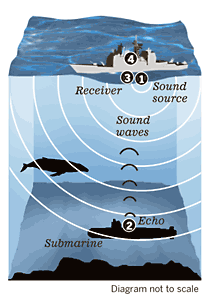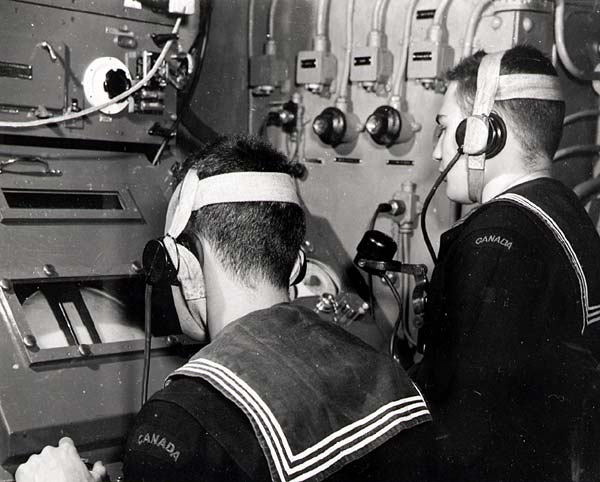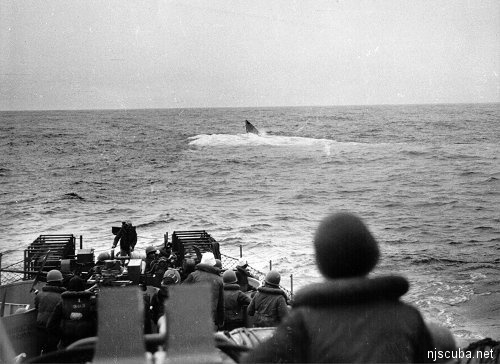Introducing SciTech Tuesday!
Put on your thinking caps, it’s SciTech Tuesday! This series will feature stories and photographs of the science and technology that helped to win a war. Be inspired by the innovative spirit of the scientists, mathematicians, engineers, service members and civilians who answered the call to create, design and build the technologies of World War II. Make a historical connection to the scientific advancements of today.

Courtesy of KAHEA.
Recent Discovery of German U-boat Uses WWII Technology
Last Monday, divers found U-550, a German submarine which sank off the coast of Nantucket following an epic battle at sea on April 16, 1944. In a true twist of irony, the same sonar technology used by the Allies to locate and destroy the doomed U-boat, ultimately led to its discovery by a privately funded group almost 70 years later.
SONAR (SOund NAvigation and Ranging) uses emitted sound waves to detect the position of objects below the surface of the water. Sound waves, created by the vibration of an object, exist as differences in pressure moving through a medium such as air or water. Sonar transducers produce a pulse of sound into the water. Any object in the path of the sound pulse will block the wave causing it to bounce back toward the transducer, which will detect the returning sound wave, or “echo.” Because the speed of sound through water is constant, the distance of the detected object from the transducer can be determined by the amount of time that passes between the initial pulse and returning echo.
Making Connections Between the Science and Technology of WWII and Today.
Back on April 16, 1944, the sailors of the USS Joyce and USS Peterson used sonar to detect the position of U-550 and drop depth charges, severely damaging the submarine. Before the German crew abandoned ship, they set explosions to sink the U-boat and prevent its recovery by the allies. The ill-fated U-550 had not been seen again until last Monday, when the research team located the submarine using side scan sonar, a modern advancement upon sonar technology used during World War II.
Sign up for our monthly Calling All Teachers eNewsletter
Post by Annie Tête, STEM Education Coordinator at The National WWII Museum.

Canadian sailors operating ASDIC, an early form of SONAR -Photo by William H. Pugsley- National Archives of Canada- PA-139273

Crew members aboard the USS Joyce watch as the German submarine U-550 sinks after being depth charged on April 16, 1944. Joyce rescued the surviving 13 crew members.


